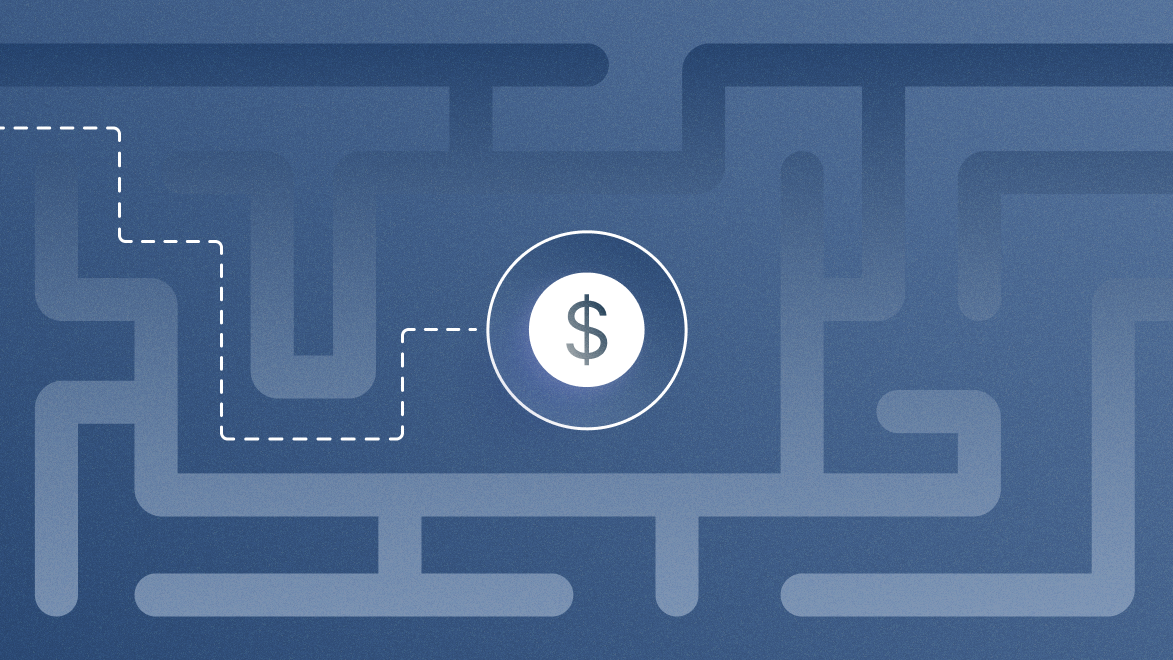Steady Ship: A guide to navigating market volatility

CFO at Mercury.
Dan Kang, CFO at Mercury, provides grounding perspective to help founders protect and grow their businesses during a time when the economic landscape is shifting by the day (or even hour).
From a macroeconomic perspective, this year has been anything but straightforward for many business leaders. As I write this in April 2025, recent economic policies, including proposed and implemented tariffs, have contributed to market volatility and negative economic sentiment; both the Dow Jones Industrial Average and Nasdaq have experienced historic rallies one day and huge selloffs the next, while the yield curve has steepened sharply. Those swings have founders rightfully concerned about the waters ahead. And I’ve learned that the most resilient businesses don’t just react to headlines — they systematically analyze potential impacts and prepare for multiple scenarios.
Economic uncertainty isn’t necessarily a startup death knell. In fact, many of today’s most successful companies launched during periods of economic turbulence — Airbnb and Uber emerged from the 2008 recession, while Slack and Square found their footing during difficult market conditions in the following years. They didn’t succeed based on perfect timing or luck. Instead, they provided real customer value and adapted quickly, while maintaining a clear-eyed view of their financial position.
This guide is written for founders who may or may not be directly impacted by tariffs, but nevertheless may feel their ripple effects. We’ll explore how to assess potential second- and third-order impacts on your business, identify early warning signals, and develop an action plan to weather the storm — while potentially uncovering opportunities that uncertainty can create.
Understand the effects of market volatility on your business
Economic shocks like new tariff policies rarely impact businesses in isolation. Even if these measures don’t directly hit your company, strategic planning requires a firm grasp of the potential cascade effects. I find it helpful to think about these impacts in three distinct layers:
- Direct impact: For example, do you sell physical goods impacted by tariffs? How much gross margin do you have to absorb cost increases? Can you reasonably pass along price increases to your customers?
- Second-order impact: Who are your customers, and how are they impacted by tariffs? Even if your business is not directly impacted, if your customers are, they may pull back on spending as they navigate the uncertainty. (For example, businesses may delay larger software purchases or cancel renewals.)
- Third-order impact: How will your business be impacted by a broader slowdown in consumer and business spending? How does demand for your product or service change during recessions? (It’s not bad news across the board — some businesses may actually see benefits during recessions or other rocky economic periods.)
Their unpredictability can make second- and third-order effects especially challenging to work around. You can easily miss gradually emerging ripples if you’re not actively watching for them. Having a cogent hypothesis about potential impacts and systematically tracking leading indicators often proves invaluable in such situations.
That said, your analysis shouldn’t become all-consuming. You can’t perfectly predict economic outcomes — that’s impossible even for world-class economists. But you can focus on identifying your business’s exposure points so you can respond thoughtfully, rather than reactively, if conditions change.
Identify leading indicators
It’s hard to know exactly how second- and third-order impacts will manifest and to what degree. While a slowdown or decline in sales is typically the most obvious indicator, it often lags — and by the time revenue drops, you may have already missed the window to adapt without feeling some pain. What you need instead is a vigilant eye on the leading indicators that signal potential shifts in your business.
Develop a working idea of what impacts could emerge, then systematically track early warning signs specific to your business model.
Here’s what these indicators might look like across different types of businesses:
- B2B software company: Monitor your sales pipeline closely, especially the number of leads converting to opportunities. Pay attention to changes in your average sales cycle length, deal size contraction, and any uptick in discount requests. Renewal rates and expansion revenue are particularly telling — existing customers pulling back on renewals or upgrades often signals broader market anxiety.
- Marketplace/fintech: Watch customer cohort trends carefully. Are new cohorts performing worse than historical ones? Are previously stable cohorts showing unexpected declines in activity or transaction volume? These subtle shifts can precede bigger changes in your business metrics.
- Ecommerce: Beyond an obvious decrease in conversion rates, look for changes in browsing patterns. Increased cart abandonment rates, lower average order values, and shifts toward lower-priced items can all indicate consumers feeling the pinch before it shows up in your top-line revenue.
- Consumer subscriptions: Track sign-up hesitation (longer consideration periods) and early cancellation patterns. Pay special attention to the reasons customers give when downgrading or canceling — an increase in cost-related concerns versus product-related issues, for example, can signal economic pressure.
- Services: Track response rates to outbound proposals and inbound inquiry volumes. Extended decision timelines, scope reductions, and project cancellations are often early signs of clients managing cash flow concerns.
The specific metrics worth tracking will vary based on your business, but the principle remains the same: Identify customer behaviors that typically precede spending decisions and monitor them carefully. Regular check-ins with your sales and customer success teams can provide qualitative insights to complement your quantitative data — they’re often the eyes and ears when it comes to customer concerns about budgets or spending freezes. Create and consistently review a simple dashboard of these leading indicators — early awareness gives you more options and more time to implement them thoughtfully.
Prepare for multiple outcomes
Rather than trying to guess how conditions in the economy and your industry will play out over the coming months, get comfortable with scenario planning. Get clear on how severe a slowdown you anticipate based on those leading indicators we just discussed, and come up with a list of actions you can take depending on what unfolds.
Financial forecasts become invaluable at this point. Create multiple scenarios that sensitize your business’s topline and show the impact on your profitability, cash burn, and runway. In times of uncertainty, it’s more important than ever to have a firm, real-time understanding of your financial position.
I recommend building at least three scenarios:
- Base case: Your current business trajectory with modest adjustments for known headwinds
- Downside case: A significant slowdown where leading indicators show material deterioration
- Severe case: A prolonged economic contraction requiring substantial business adaptations
For each scenario, model the impact on revenue, gross margins, operating expenses, and — most critically — cash runway. The value in this exercise comes from determining your “trigger points,” e.g., specific thresholds in your leading indicators that would prompt you to shift from one scenario plan to another.
For example, if B2B sales cycles extend beyond a certain length or if customer acquisition costs increase beyond a specific threshold, you might decide to implement your downside case playbook.
This structured approach allows you to remain calm when facing uncertainty. Instead of making reactive decisions based on headlines or market volatility, you'll have already thought through your response options and can implement them methodically when your data suggests the time has come.
Remember that scenario planning isn’t a one-time exercise, either. Revisit and refine your models regularly as you gather new information about the economic environment and your business’s performance within it.
Know which levers to pull when needed
Once you understand the potential financial impact across your scenarios, build a concrete action plan. Decide where you want to be proactive versus reactive and what trade-offs you're willing to make. If you have a strong conviction about how economic conditions will affect your business, act quickly — cash saved today extends your runway to navigate uncertain times. If you’re less certain about impacts, set clear thresholds for when your leading indicators signal it’s time to implement changes.
Here are some practical actions to consider:
Sharpen your focus
- Shut down unprofitable business lines or products
- Double down on segments showing resilience or counter-cyclical growth
- Pause or slow expansion into new markets or customer segments
Manage your workforce prudently
- Reduce hiring rates for growth-oriented positions
- Implement hiring freezes in non-critical areas
- Consider targeted role eliminations if necessary
- Review compensation structures and non-essential perks
Get very strategic about marketing
- Pause campaigns with longer payback periods or unclear ROI
- Shift budget toward higher-converting channels
- Reassess customer acquisition targets and costs
- Reduce customer incentives that don’t directly drive retention
Optimize vendor and operational costs
- Evaluate which vendors are critical versus nice-to-haves
- Renegotiate contracts for lower costs and improved flexibility
- Reduce travel and discretionary spending
- Reconsider office space needs if remote work is viable
Shore up liquidity
- Ensure cash isn’t just tied up in working capital
- If you have access to credit lines, consider drawing upon them
- Explore non-dilutive financing options before you need them
- Evaluate accounts receivable processes to accelerate collections
Your business model and scale will determine the right combination of actions. Run the numbers to understand how much impact various levers provide and have a specific financial goal in mind (e.g., operate at breakeven, ensure 18 months of runway, etc.) before you take action.
And don’t forget: Volatile economic periods eventually end. This is probably not your forever. You want to set up your business to weather the storm by running as tight a ship as possible while preserving your ability to leverage tailwinds when conditions improve. This might mean making hard decisions sooner rather than later — especially regarding team size and composition — but making them with care and transparency.
Do your best to be decisive, but level-headed. Try not to make emotional decisions driven by market volatility or headline news. Stay focused on your business’s specific indicators and adjust your plans according to what you’re seeing rather than what you fear might happen.
Find opportunity in uncertainty
Economic uncertainty doesn’t just mean it’s time to defend your business — it can also create unique opportunities for a business with the right foundations and clear vision.
Here are several ways economic uncertainty might wind up benefiting your business:
- If competitors pull back, you might be able to capture more market share, assuming your business has the resources to continue to invest in growth.
- Changes in customer / market behavior could create opportunities for your business to grow in unexpected ways (temporarily or otherwise).
- If other businesses are hiring less, you may be able to recruit higher-quality candidates in a less competitive job market .
- You may be able to manage out low performers more efficiently and gently.
- You may be able to renegotiate unfavorable business agreements.
The key is to look for the unique and unexpected doors that open while staying disciplined and clear about what will truly help your business in the long term versus what will feel good in the moment.
Conclusion
Economic changes and cycles are all but inevitable — so get comfortable with the discomfort. It never feels great navigating uncertain periods, but it doesn't have to be catastrophic.
Build resilience into your business by adapting quickly and thoughtfully while maintaining focus on solving customer problems that matter. You can't control market conditions — but you can control how you respond. The preparations you make today can help you weather current conditions while building financial discipline and strategic clarity that can benefit your business in any economic climate. Stay vigilant, be decisive, and keep an eye on the opportunities that may arise when markets shift.
The companies that emerge strongest from periods of uncertainty are those that find the right balance between prudence and conviction — tightening operations where needed while continuing to invest in what makes their business uniquely valuable.

